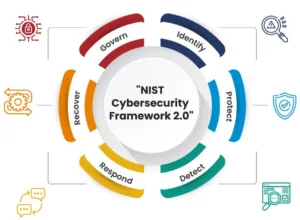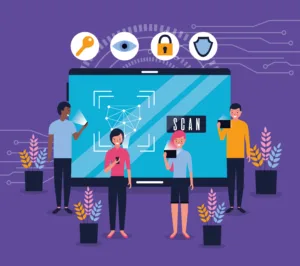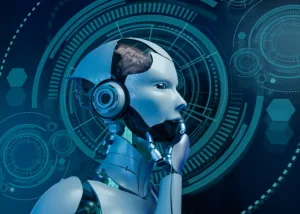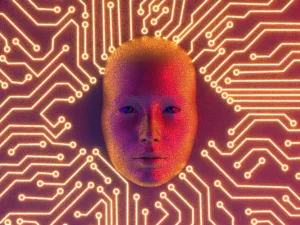
Table of Contents
Introduction
Artificial Intelligence (AI) has become an integral part of our technological landscape, driving innovations and advancements across various domains. In the realm of AI, two distinct paradigms emerge: closed-source AI and open-source AI.
In this blog post, we will explore the concept of closed-source AI, draw comparisons with the open-source variant, and specifically focus on OpenAI’s role in cybersecurity, shedding light on its benefits with real-life examples.
Understanding Closed-Source AI
Closed-source AI refers to artificial intelligence systems whose source code is proprietary and not publicly accessible. Companies or organizations that develop closed-source AI maintain control over the codebase, limiting external access and modification.
This approach is often associated with proprietary software, where the intellectual property is protected and not freely available to the public.
1. Control and Security:
One of the primary advantages of closed-source AI is the level of control it affords developers and organizations. With proprietary code, they can safeguard their algorithms, models, and innovations from unauthorized access, modification, or replication.
2. Monetization and Business Model:
Closed-source AI allows companies to monetize their intellectual property through licensing, subscriptions, or product sales. This business model incentivizes continuous innovation and investment in AI research and development.
3. Customization and Specialization:
Companies with closed-source AI can tailor their models to specific use cases, industries, or client requirements. This customization enables them to address unique challenges and deliver solutions optimized for their target audience.
4. Competitive Advantage:
The closed-source model provides a competitive advantage by keeping proprietary algorithms and technologies confidential. This secrecy can be crucial in industries where innovation and differentiation are key factors for success.
Comparing Closed-Source AI and Open-Source AI
Closed-source AI and open-source AI represent two distinct approaches to artificial intelligence development, each with its set of characteristics, advantages, and challenges.
Here, we’ll compare closed-source and open-source AI in various aspects:
1. Accessibility and Transparency:
– Closed-Source AI: The source code of closed-source AI is proprietary and not publicly accessible. This lack of transparency means that the inner workings of the algorithms and models are not open for review or modification by the public.
– Open-Source AI: Open-source AI, on the other hand, makes its source code freely available to the public. This transparency fosters collaboration, scrutiny, and modification by a community of developers.
2. Control and Ownership:
– Closed-Source AI: Organizations developing closed-source AI maintain complete control and ownership over their intellectual property. They can dictate how the AI is used, distributed, and modified.
– Open-Source AI: The open-source model encourages collaboration and shared ownership. The community often contributes to the development and improvement of the AI, challenging strict control by any single entity.
3. Innovation and Collaboration:
– Closed-Source AI: Innovation in closed-source AI is primarily driven by the internal team of developers. Limited collaboration with external contributors may hinder the diversity of ideas and approaches.
– Open-Source AI: The open-source model promotes collaborative innovation. Developers from diverse backgrounds can contribute to the project, leading to a rich ecosystem of ideas, improvements, and use cases.
4. Customization and Adaptability:
– Closed-Source AI: Organizations can customize closed-source AI for specific use cases, tailoring it to their unique requirements. However, this customization is often limited to what the closed-source provider allows.
– Open-Source AI: Users have the freedom to customize and adapt open-source AI according to their needs. This flexibility enables a broader range of applications and ensures a better fit for various scenarios.
5. Security and Trust:
– Closed-Source AI: The proprietary nature of closed-source AI may provide a level of security through obscurity. However, trust relies on the reputation and commitment of the organization maintaining the closed-source code.
– Open-Source AI: Security is enhanced through the transparency of open-source AI. The community can review the code for vulnerabilities, fostering trust in the system’s security, but it also means potential attackers have access to the same information.
6. Monetization and Business Models:
– Closed-Source AI: Companies can monetize closed-source AI through licensing, subscriptions, or outright sales. This model provides predictable revenue streams, allowing sustained investment in research and development.
– Open-Source AI: Monetization in open-source AI often involves providing additional services, support, or proprietary add-ons. Some open-source projects are sponsored by organizations, while others rely on community contributions.
7. Integration and Compatibility:
– Closed-Source AI: Integration with other proprietary systems is usually seamless. However, there might be limitations when interfacing with external open-source tools and technologies.
– Open-Source AI: Open-source AI is generally designed to be interoperable with a wide range of tools and platforms, fostering compatibility and flexibility in implementation.
8. Community Support and Documentation:
– Closed-Source AI: Support and documentation are typically provided by the organization that owns the closed-source AI. Users rely on the company’s resources for troubleshooting and guidance.
– Open-Source AI: The community contributes to support and documentation in open-source projects. Extensive documentation and community forums enhance accessibility and provide a wealth of knowledge for users.
The choice between closed-source and open-source AI depends on factors such as the organization’s goals, the desired level of control, the need for customization, and the importance of community collaboration. Both models have their merits, and the decision often hinges on finding the right balance for a given project or application.
Key advantages of Closed-source AI:
1. Intellectual Property Protection:
Closed-source AI allows developers and organizations to safeguard their intellectual property. The proprietary nature of the code ensures that the algorithms, models, and innovations remain confidential and protected from unauthorized access or replication.
2. Control Over Development and Distribution:
Companies that develop closed-source AI maintain full control over the entire development lifecycle, from research and design to testing and distribution. This control is essential for managing the quality, security, and features of the AI system according to the developer’s vision and business strategy.
3. Monetization Opportunities:
Closed-source AI provides opportunities for monetization through various business models, such as licensing, subscriptions, or outright product sales. This revenue stream allows companies to sustain ongoing research and development efforts, ensuring the continuous improvement of their AI solutions.
4. Customization for Specific Use Cases:
The closed-source model enables organizations to tailor AI models to specific use cases, industries, or client requirements. Customization ensures that the AI solution is optimized to address unique challenges and deliver maximum value in a particular context.
5. Competitive Advantage:
The proprietary nature of closed-source AI provides a competitive advantage by keeping algorithms and technologies confidential. This secrecy can be critical in industries where innovation and differentiation play a crucial role in staying ahead of competitors.
6. Security Through Obscurity:
While security through obscurity is not foolproof, the closed-source model can provide an additional layer of security. The idea is that potential attackers have limited insights into the system’s inner workings, making it more challenging for them to exploit vulnerabilities.
7. Focused Research and Development:
Companies investing in closed-source AI can direct their research and development efforts towards specific goals without the immediate pressure of open scrutiny. This focused approach allows for the refinement of algorithms and models without external influences during the development phase.
8. Predictable Revenue Streams:
The ability to license or sell closed-source AI solutions provides companies with predictable revenue streams. This stability in income supports ongoing maintenance, updates, and improvements to ensure the long-term viability and competitiveness of their AI products.
9. Compliance and Regulatory Control:
In certain industries, regulatory requirements may necessitate a higher level of control over software development and data handling. Closed-source AI allows organizations to maintain compliance with industry-specific regulations while exercising greater control over the handling of sensitive information.
10. Ease of Integration with Proprietary Systems:
Closed-source AI solutions can be seamlessly integrated with other proprietary systems within an organization. This cohesion ensures compatibility and interoperability, facilitating a smoother integration process and reducing potential conflicts with existing technologies.
Conclusion
In the evolving landscape of AI, the closed-source and open-source paradigms coexist, each with its unique advantages and challenges. OpenAI, as a pioneer in open-source AI, has played a pivotal role in driving innovation and progress in the field of cybersecurity.
While closed-source AI comes with these advantages, it is essential to recognize that it also poses challenges, such as limited external collaboration, potential for vendor lock-in, and the need for trust in the vendor’s commitment to security and ethical practices.
The collaborative efforts and transparency promoted by OpenAI contribute to a more secure digital environment, where the benefits of AI can be harnessed responsibly for the greater good.
As we navigate the future of AI, striking a balance between closed-source control and open-source collaboration will be essential for building a resilient and secure digital ecosystem.
Read more on https://cybertechworld.co.in for insightful cybersecurity related content.



















